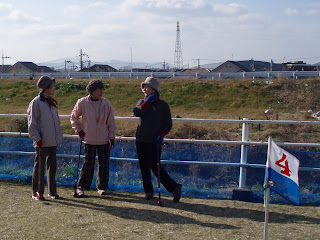It is said that a picture is worth a thousand words. I feel this is true as I watched the documentaries’ about two very different photographers - Annie Liebovitz and James Nachtwey - who both take the most wonderful pictures.
Cover photographer Annie Liebovitz and war photographer James Nachtwey
(Left picture is borrowed from jsj.dk/blog and right picture from nationalgeographic.com)
They both seem very aware of the fact that a picture can tell a story, and that in this case the photographer is the author. While Liebovitz tells a story of hidden potential and fairytales, Nachtwey cuts to the core of danger to portrait the truth of war and poverty. They both have a message to tell and a picture to sell - and they know how their audience tick.
One common thing that strikes me as common ground is respect. Both Liebovitz and Nachtwey expressed how they respect the individuals they photograph. And one can see this respect as a silent act of communication between the photographer and photographed. When it comes down to the very base of picture taking there is the two respect and communication.
Picture by Nachtwey (borrowed from nationalgeographic.com)
Picture by Nachtwey (borrowed from treeatwork.blogspot.com)
Respect and communication is one of the most important common grounds for Liebovitz and Nachtwey, but to compare the two photographers is like to compare fire with water. One might be compelled to think that Nachtwey, with his calm and focused search for the truth, is a more significant person then Liebovitz. And that might be true, but Liebovitz’ pictures are also significant. She passionately captures the small and big details of the changing society – and the people in it.
Picture by Liebovitz (borrowed from bealencastro.tumblr.com)
Picture by Liebovitz (borrowed from susannekober.wordpress.com)
To wrap it all up in shortness; It is fact that they both document the world that we all live in – and most important- they document the people of thät world. And this fact is one that never must be forgotten: It is all about the people. It doesn’t matter if you are a war photographer as Nachtwey or a cover photographer as Liebovitz, respect for the people is key. To be a good photographer and even a good anthropologist one can learn from Nachtweys calmness and the way he prepares his mind – researches – before he leaves for the war grounds. At the same time there is also much to learn from Leibovitz. Her compassion for the small things that represents her vision of the person in front of her lens and the way she gets under the skin of other people. There is a whole lot to learn from both and a whole lot to learn about the rigth way to see people through a lens.










